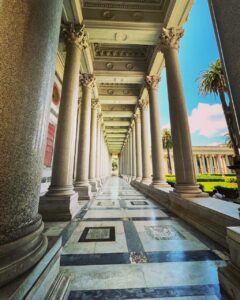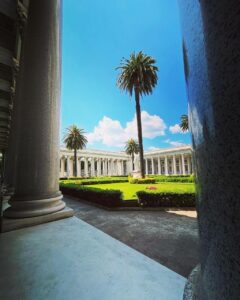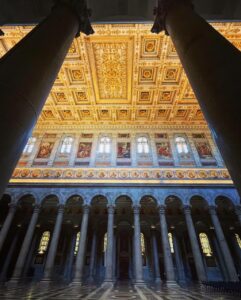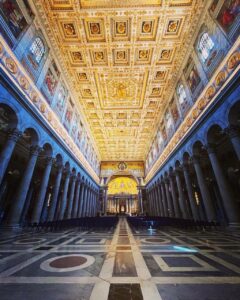
Italian philosophy of life in contrasts (p. 13): Basilica di San Paolo Fuori le Mura
A little away from the center of Rome, you always discover new unique landmarks that many might not know about.
“Roma non è una città come le altre. È un grande museo, un salotto da attraversare in punta di piedi”
(Rome is not a city like any other. It is a vast museum, a salon to be crossed on tiptoe.)

Behind the old city walls lies the Basilica di San Paolo Fuori le Mura (Basilica of Saint Paul Outside the Walls). It is one of the oldest and most valuable Christian churches, listed as a UNESCO World Heritage site.
Due to the preaching of the new faith, Apostle Paul was executed in 67 AD by the order of Emperor Nero. It is believed that he was buried here. In 324 AD, Emperor Constantine ordered the construction and consecration of the first basilica on this site. However, the initial temple was not as grand, so it was reconstructed in 390 AD, surpassing even St. Peter’s Basilica in the Vatican in size.

Over the years, the basilica was embellished and decorated, but not fundamentally rebuilt. However, in 1823, during a roof repair, a severe fire nearly destroyed the cathedral. At the request of Pope Leo XII, Russian Tsar Nicholas I sent malachite and lapis lazuli for its decoration. In 1854, the renovated basilica with the old foundation was consecrated. Ongoing interior work continued for decades. It is now one of Rome’s four Major Basilicas and a UNESCO World Heritage Site.
Within the Basilica’s grounds lies a well-maintained, beautiful, green courtyard, adding even more solemnity to the temple.

The main decorations are inside in Neoclassical and Classical styles. The cathedral consists of five halls. The central main hall is divided into parts by 80 majestic granite columns. Fragments of the 5th-century structure are preserved here in the form of mosaics and arches.
Just below the vaults are 36 fresco paintings depicting episodes from the life of the Apostle Paul. Beneath them, running the length of the entire temple, are mosaic medallions holding portraits of 236 pontiffs. There are not many empty frames left. Legend has it that when all the medallions are filled, and the last Pope dies, it heralds the end of the world.

The main relic of the temple is located in the center of the hall – the sarcophagus containing the remains of Saint Paul. Only the Pope can celebrate Mass over the remains.
This marvelous, majestic temple with centuries of history seems hidden from view, situated not in the central part of Rome. At first glance, it amazes with its scale, energy, atmosphere, expanses, and the impeccability of both its exterior and interior. Here, you realize that a whole lifetime would not be enough to explore all the hidden corners of the Eternal City…









